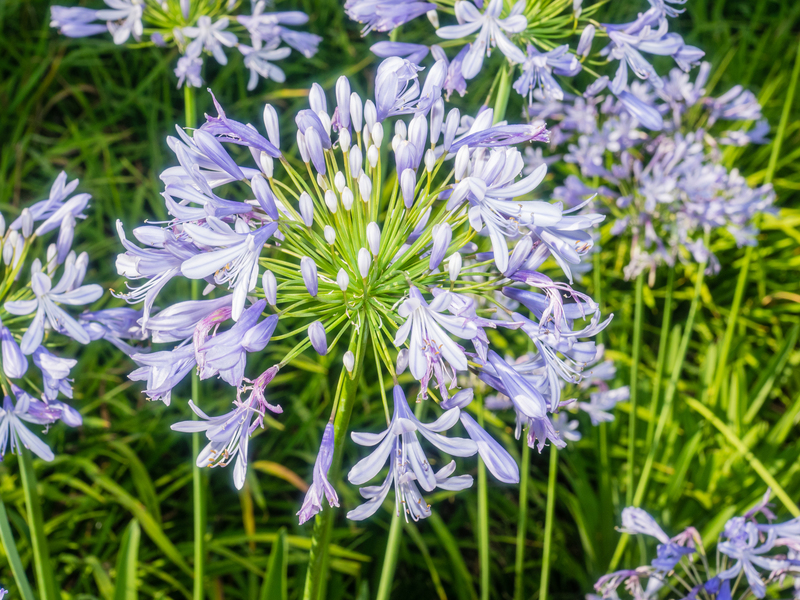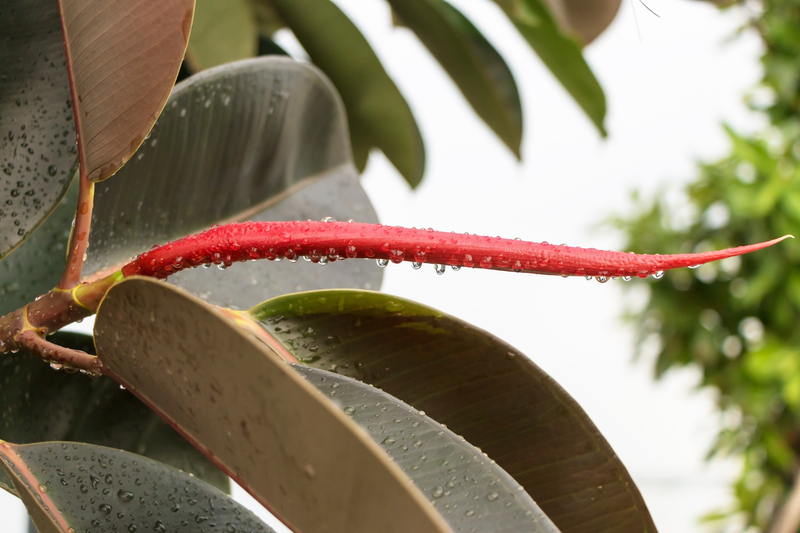3 Proven Tips to Tackle Weeds and Maintain a Healthy Lawn
Posted on 12/09/2025
3 Proven Tips to Tackle Weeds and Maintain a Healthy Lawn
A beautifully manicured lawn is the pride of every homeowner. However, keeping a lush, weed-free lawn is no easy feat. Unsightly weeds can quickly overtake even the best-tended yards if left unchecked. But don't worry -- with the right techniques and a little diligence, you can win the battle against weeds and ensure your grass stays vibrant, healthy, and green all season long. In this comprehensive guide, we'll explore 3 proven tips to tackle weeds and maintain a healthy lawn, so you can enjoy an enviable yard that turns heads in your neighborhood.
Why Is Weed Control Essential for a Healthy Lawn?
Weeds aren't just an eyesore--they compete with your grass for essential resources like water, sunlight, and nutrients. Weed infestation can lead to:
- Poor grass growth due to competition for nutrients
- Increased susceptibility to pests and diseases
- Reduced curb appeal and property value

Tip 1: Implement a Consistent Lawn Care Routine
One of the most effective ways to prevent weeds is by maintaining a robust, healthy turf. Weeds often take advantage of weak spots in your lawn, so following a steady maintenance routine is absolutely critical. Here are several components of a successful strategy:
Mow at the Right Height
Cutting your grass too short may seem like a time-saver, but it actually encourages weed growth. Most common grass varieties do best when mowed to a height of 2.5 to 4 inches. Keeping your grass a bit taller allows it to:
- Shade out weed seeds: Taller grass blades create shade at the soil surface, making it difficult for weed seeds to germinate and thrive.
- Develop deeper roots: Longer grass supports deep root development, which improves the lawn's drought tolerance and crowding out of invading weeds.
Water Deeply and Infrequently
Shallow, frequent watering encourages weak grass roots and can provide the perfect environment for weed germination. Instead, water your lawn deeply (about 1 inch per week) and less often. This promotes strong, deep grassroots and makes it harder for weeds to establish themselves.
- Water early in the morning to minimize evaporation and prevent fungal diseases.
- Avoid watering in the evening, as overly wet grass blades overnight can trigger fungal issues.
Fertilize for Strong Growth
A well-fed lawn is better equipped to outcompete weeds. Use a slow-release, balanced fertilizer in the spring and fall for cool-season grasses, or in late spring and summer for warm-season grass varieties. Be sure to follow the manufacturer's instructions to prevent over-fertilizing, which can harm your turf.
Tip 2: Use Targeted Weed Removal Tactics
If weeds have already taken hold, it's essential to tackle them before they spread. Weed removal techniques generally fall into two categories--manual and chemical control. Here's what you need to know about each:
Manual Weed Removal: The Traditional Approach
For those who prefer natural methods or have only a few weeds to deal with, manual removal is highly effective. Some tips include:
- Pull weeds when the soil is moist, as roots come up easier after rain or watering.
- Use a weeding tool to get as much of the root as possible--the key to preventing regrowth.
- Dispose of weeds in the trash rather than composting, especially if they have gone to seed.
Chemical Weed Control: Use with Caution
Sometimes stubborn perennial weeds like dandelions or clover require extra help. In these cases, you can turn to selective herbicides:
- Pre-emergent herbicides: These prevent weed seeds from germinating and should be applied early in the season before weeds begin to sprout (typically in early spring).
- Post-emergent herbicides: Use these to treat weeds that have already emerged. Choose products labeled for your grass type, and always follow safety guidelines.
Mulching and Ground Covers
Consider mulching garden beds and borders with organic materials like bark chips or straw. Mulch blocks light and suppresses weed growth, keeping your ornamental beds looking neat and weed-free. You can also use low-growing ground covers as living mulches, providing attractive weed suppression in shady or hard-to-mow areas.
Tip 3: Cultivate a Thick, Resilient Lawn
A thin, patchy lawn is an open invitation to aggressive weeds. Thick, dense grass is nature's best defense against unwanted intruders. Here's how to promote a lush, vigorous turf that naturally resists weed invasions:
Aerate Your Soil
Compacted soil hinders root growth, reduces water infiltration, and encourages the development of weeds. Aerating your lawn once a year relieves soil compaction and allows air, water, and nutrients to penetrate deeper. This leads to:
- Healthier, deeper grass roots
- Improved resistance to stress, drought, and pest attacks
- Less space for weeds to become established
Overseed to Fill in Bare Spots
Bare or thin patches are quickly colonized by opportunistic weeds. Overseeding--the process of spreading new grass seed over existing turf--is an excellent way to fill in these areas:
- Choose a grass seed blend that matches your lawn type and climate.
- Overseed in the fall for cool-season grasses or late spring for warm-season types.
- Keep the area lightly moist until seeds germinate and establish.
Practice Lawn-Friendly Maintenance Habits
Beyond core practices, adopt these habits to further support your lawn's health:
- Avoid heavy foot traffic on wet turf to prevent soil compaction.
- Alternate mowing patterns each time you mow to promote upright growth and prevent ruts.
- Regularly inspect for signs of weed outbreak and address them promptly.
Expert Tips for Lasting Weed Control
If you want to completely eliminate weeds from your lawn and maintain lush, green grass, add these expert strategies to your toolkit:
- Stay vigilant: Inspect your lawn regularly throughout the growing season so you can catch weed problems early.
- Don't let weeds go to seed: Removing weeds before they flower and spread seeds dramatically reduces the weed bank for next season.
- Maintain consistent care: Lawns that slip into neglect are much more prone to weed invasion--routine care is your best defense.
- Adapt strategies for your climate: Warm and cool-season grasses have unique needs, so adjust mowing heights, fertilization schedules, and watering routines accordingly.

Choosing the Right Lawn Care Products
With countless products available--from natural weed killers to slow-release fertilizers--making the right choices can be overwhelming. Consider these factors:
- Grass type: Read labels to ensure compatibility with your lawn species.
- Environmental impact: Opt for organic or low-persistence products whenever practical.
- Target weeds: Identify the weed species you're battling--some products are only suitable for broadleaf or grassy weeds.
- Timing: Follow seasonal application schedules based on manufacturer recommendations.
Conclusion: Enjoy a Weed-Free, Healthy Lawn All Year
Battling weeds doesn't have to be a losing fight. By adopting the proven tips for healthy lawns outlined above--implementing consistent turf care, using targeted removal tactics, and fostering dense, resilient grass--you'll create a yard that naturally resists weed invasion and stays healthy all season. Regular maintenance not only improves your home's curb appeal, it also provides a more enjoyable outdoor space for family and friends to enjoy.
Ready to transform your yard into the envy of the neighborhood? Take action with these 3 proven tips to tackle weeds and maintain a healthy lawn, and watch your weed-free grass flourish for years to come.

